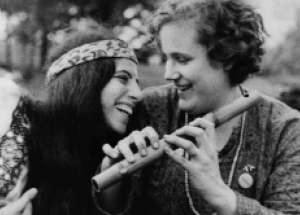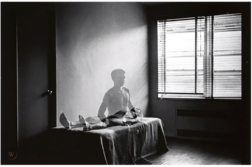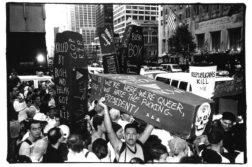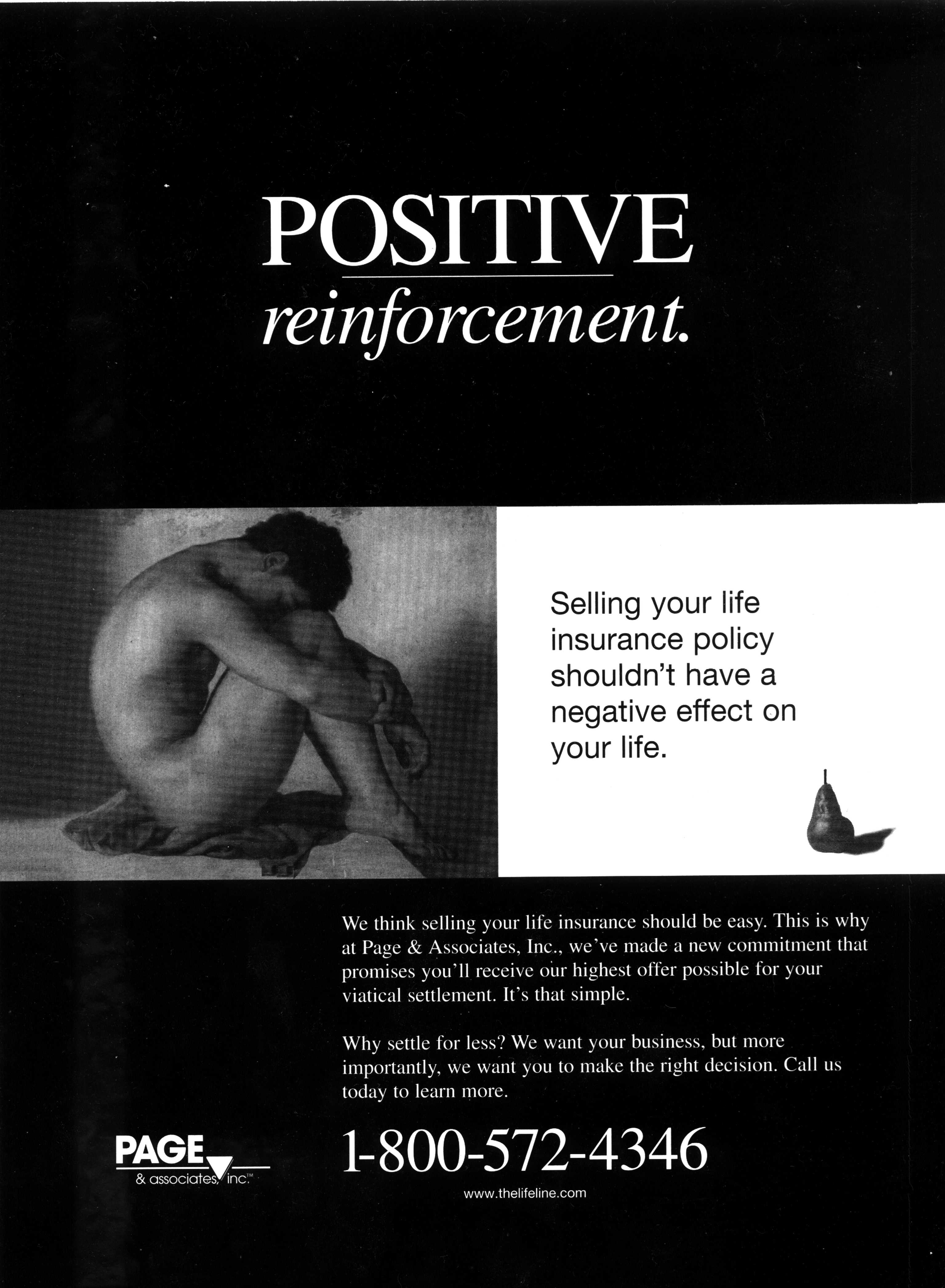THE ASCENDANCY of photography during the 20th century produced an extraordinary historical record of society and culture. In an instant a photograph of the past can leap into the present with irrepressible vitality. Essayist Susan Sontag wrote in “Photography: A Little Summa” that photographs “reveal hidden truths about themselves or less than fully reported social conflicts in societies both near and far from where the viewer lives.” Photographs make visible what is concealed and become evidence of reality—a photograph is a powerful record of the social space.
The early photographers of lesbian and gay liberation confronted ambiguity by shooting photographs of out-in-the-open GLBT people, images of astonishing and unequivocal candidness. Forty years ago, dating from the Stonewall Rebellion in 1969, it was daring and risky to be the subject of a photograph depicting gay liberation, unabashed and full-framed, the physical declaration of political and sexual identity. Unlike the coded photographs of earlier generations, such as those in David Deitcher’s book, Dear Friends: American Photographs of Men Together, 1840-1918, the ones of the early Gay Liberation era were taken with breathtaking directness. These images serve as a permanent record of the life-affirming sexual identities that emerged during that era.
In On Photography, Sontag observed that photographs have intrinsic value as social commentary and that “social change is replaced by a change in images.” The story of GLBT people needed to be told. The subjects in images had to be accessible, real, and vulnerable if they were to be effective. The intimate photographs of Ellen Shumsky are a perfect example of this. Despite being taken in the public square of Central Park’s Sheep Meadow surrounded by tens of thousands at New York’s first gay pride march in 1970, the lesbian subjects in Shumsky’s image appear to share a private moment (Figure 1). In order for social change to occur, there has to be evidence of the event, as in the photograph by Fred W. McDarrah for The Village Voice of the Stonewall Rebellion (Figure 2). And in the documentary photograph by Diana Davies, an image also of the first march that portrays the exultation of social progress (Figure 3).
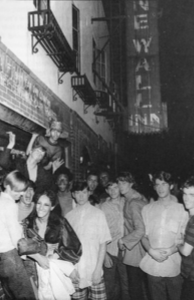
S. McDarrah, gay pride: photographs from Stonewall to today, 1994.
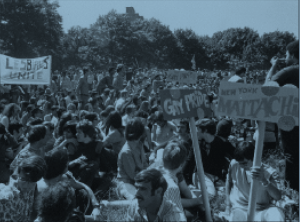
June 28, 1970.” Reprinted with permission of Diana Davies Photographs, Manuscripts
and Archives Division, New York Public Library.


